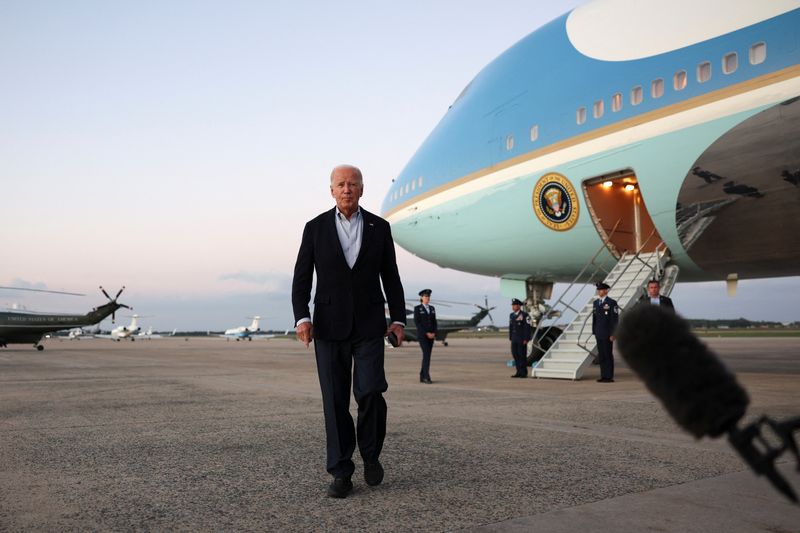Commodities
Biden declines public negotiation on Israel’s stance on Iranian oil sites

By Andrea Shalal and Kanishka Singh
WASHINGTON (Reuters) – Democratic U.S. President Joe Biden said on Thursday he will not negotiate in public when asked if he had urged Israel not to attack Iran’s oil facilities.
WHY IT’S IMPORTANT
Israel has been weighing options to respond to Tehran’s ballistic missile attack on Tuesday. The U.S. said then it would work with Israel to make sure Iran faced severe consequences.
Biden earlier in the day contributed to a surge in global oil prices when he said Washington was discussing strikes on Iran’s oil facilities. A U.S. official later said Washington does not believe Israel has decided yet how to respond to Iran.
Biden on Wednesday said the U.S. did not support any Israeli strike on Iran’s nuclear sites.
KEY QUOTES
“I don’t negotiate in public,” Biden told reporters when asked if he was telling Israel not to attack Iran’s oil facilities.
Asked if he worried an Israeli strike on Iran’s oil facilities would raise oil prices, he said; “If a hurricane hits, prices are going to go up. I don’t know; who knows.”
Biden was also asked why he had not spoken to Israeli Prime Minister Benjamin Netanyahu in recent days. He replied: “Because there’s no action going on right now.”
CONTEXT

During a year of cross-border conflict between Israel and Hezbollah, Israeli attacks have killed nearly 2,000 people in Lebanon, most in the past two weeks, and displaced more than 1.2 million people there. Israel began a ground incursion in Lebanon this week, saying its aim is to defeat Hezbollah and return some 60,000 evacuated Israelis to their homes in the north.
Israel is also waging a war in Gaza in which nearly 42,000 people have been killed and nearly all of the enclave’s 2.3 million population displaced. That followed a deadly Oct. 7 attack on Israel by Palestinian Hamas militants.
Commodities
Oil prices rise; U.S. crude inventories plunge, Russia-Ukraine truce eyed
Commodities
India’s Reliance to stop buying Venezuelan oil over US tariffs, sources say
Commodities
Oil prices climb on Venezuela supply worries

 Forex3 years ago
Forex3 years agoForex Today: the dollar is gaining strength amid gloomy sentiment at the start of the Fed’s week

 Forex3 years ago
Forex3 years agoUnbiased review of Pocket Option broker

 Forex3 years ago
Forex3 years agoDollar to pound sterling exchange rate today: Pound plummeted to its lowest since 1985

 Forex3 years ago
Forex3 years agoHow is the Australian dollar doing today?

 Cryptocurrency3 years ago
Cryptocurrency3 years agoWhat happened in the crypto market – current events today

 World3 years ago
World3 years agoWhy are modern video games an art form?

 Commodities3 years ago
Commodities3 years agoCopper continues to fall in price on expectations of lower demand in China

 Economy3 years ago
Economy3 years agoCrude oil tankers double in price due to EU anti-Russian sanctions























